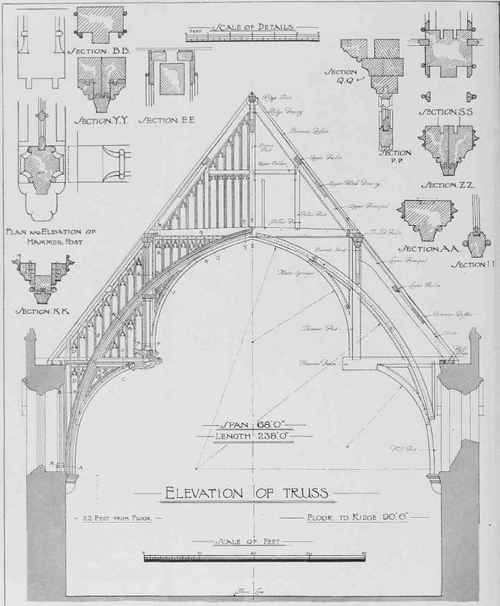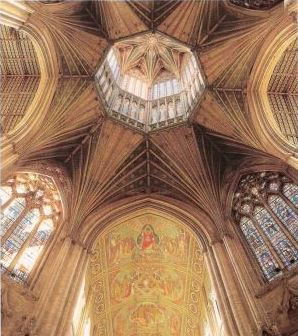An Encyclopaedia of English Medieval Carpentry

Latest Entries:
The Monk's Dormitory, Durham Cathedral
Log Coffins, Yes!
Introduction
In the later Middle Ages English carpenters achieved a level of technical competence and
aesthetic creativity which has never been equalled. This project sets out to define and illuminate the techniques and structures the carpenter crafted during that period. It is written with the minimum of jargon with the non-expert reader in mind.
I also supply brief biographies of important carpenters.
If you find some surprising omissions, this is because roof carpentry is the main focus of this work.
As the Middle Ages unfolded and patrons developed a penchant for display roofs and ever wider spans, roof carpentry provided the carpenter’s
greatest technical challenge. As carpenters overcame these challenges, such carpentry is arguably the most
fascinating form of the carpenter's art.
The period defined as the Middle Ages is 1066 (the Norman invasion) to 1534 (the
Act of Supremacy).
Smartphones: I began this site before smartphones became popular, and it is just too much work for me to update all the coding.
So it doesn't look great on a smartphone.
But then again, neither does The Lord of The Rings.
Magnificent Examples of English Medieval Carpentry:

Clockwise from top-left: The spire scaffold of Salisbury Cathedral, 1344-76; the lantern and timber vaulting in the octagon of Ely Cathedral, c. 1339; the hammer-beam roof of St Mary's Church, Bury St Edmunds, Suffolk, c. 1430; the hammer-beam roof of Westminster Hall, 1393-98.
The Encyclopaedia:
Thank you.